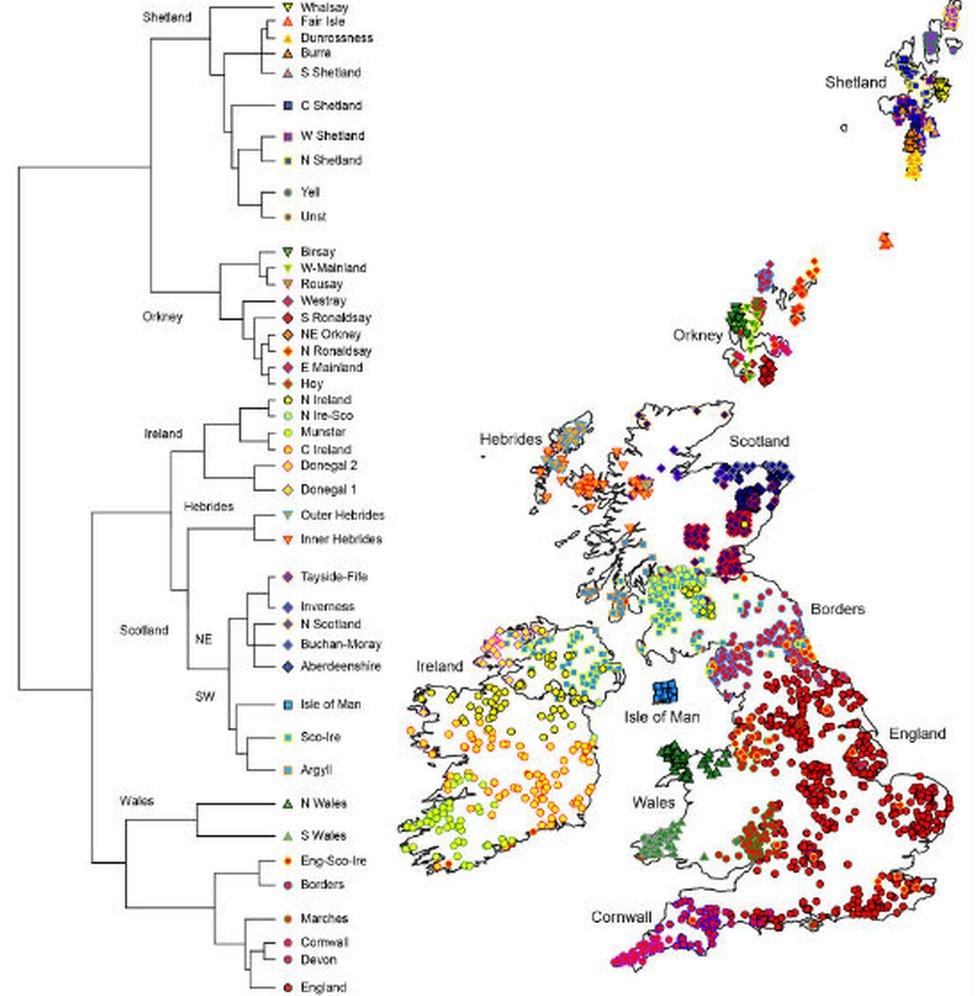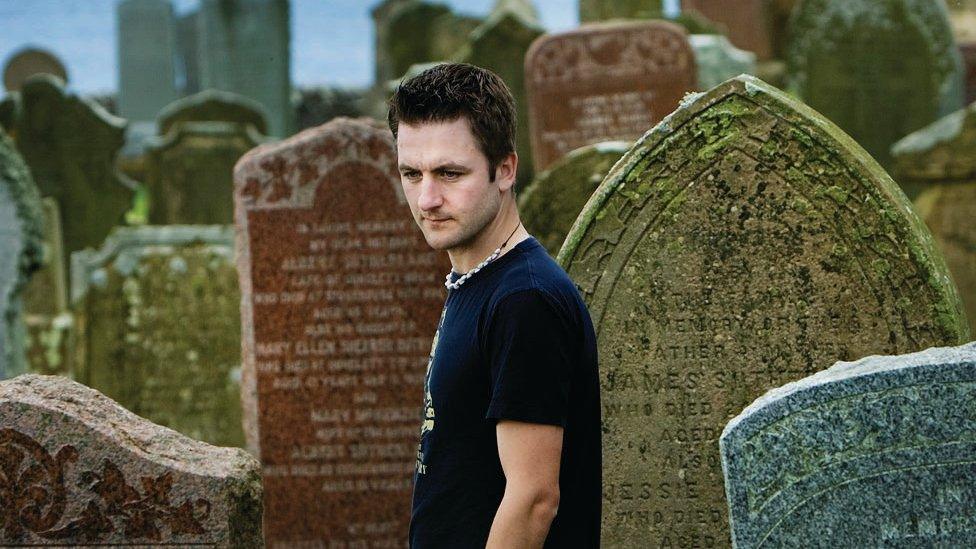Scotland's genetic landscape reflects Dark Age populations
- Published

Scotland's genetic landscape reflects ancient kingdoms
Scotland's genetic landscape is remarkably similar to Dark Age populations, according to Scots researchers.
The findings mean people still live in the same areas as their direct ancestors.
Experts at Edinburgh University found six clusters of genetically-similar people dotted around the country.
This is because people married and stayed locally, preserving their genetic identity.
The experts said the DNA of Scottish people still reflected the country's ancient kingdoms, proving that people had not really moved around much.
Clusters of similarity
The findings show about six clusters of genetically-similar people in the Borders, the south west, the north east, the Hebrides, Orkney and Shetland.
Prof Jim Wilson, from Edinburgh University's Usher Institute and MRC Human Genetics Unit, said: "It is remarkable how long the shadows of Scotland's Dark Age kingdoms are, given the massive increase in movement from the industrial revolution to the modern era.
"We believe this is largely due to the majority of people marrying locally and preserving their genetic identity."

In addition to showcasing Scotland's genetic continuity, experts believe this type of population analysis could aid the discovery of rare DNA differences that might play major roles in human disease.
Dr Edmund Gilbert, from the Royal College of Surgeons in Ireland (RCSI), said: "This work is important not only from the historical perspective, but also for helping understand the role of genetic variation in human disease.
"Understanding the fine-scale genetic structure of a population helps researchers better separate disease-causing genetic variation from that which occurs naturally in the British and Irish populations, but has little or no impact on disease risk."
The study looked at the genetic make-up of more than 2,500 people from Britain and Ireland - including almost 1,000 from Scotland - whose grandparents or great grandparents were born within 50 miles of each other.

Prof Jim Wilson described the genetic similarities as "remarkable"
Researchers from Edinburgh University and the Royal College of Surgeons in Ireland then compared this with the DNA of people who lived thousands of years ago.
Kingdoms in the Dark Ages, widely considered to have been between the end of the Roman Empire in 476 AD to about 1000 AD, occupied comparable areas including Strathclyde in the south west, Pictland in the north east, and Gododdin in the south east.
The study also discovered that some of the founders of Iceland may have originated from north west Scotland and Ireland, and that the Isle of Man is predominantly Scottish in its genetic ancestry.
Orkney and Shetland had the highest levels of Norwegian ancestry outside Scandinavia and many islands within the archipelagos had their own unique genetic identity, with notable genetic differences between people living only a few miles apart even though there were no obvious physical barriers.
The study was funded by the Medical Research Council, the Chief Scientist Office of the Scottish government and Science Foundation Ireland.
It is published in the journal Proceedings of the National Academy of Sciences of the United States of America, external.
- Published17 April 2012
